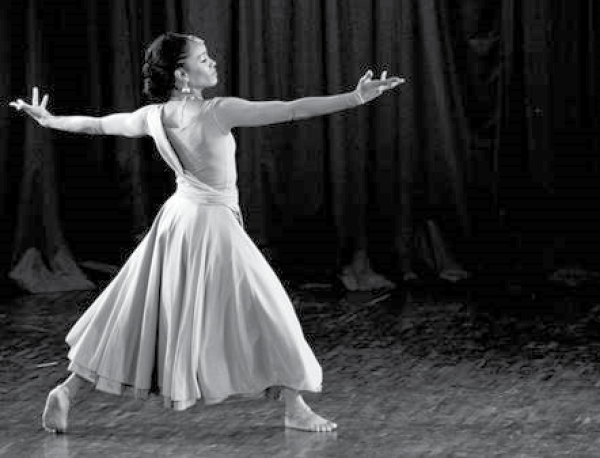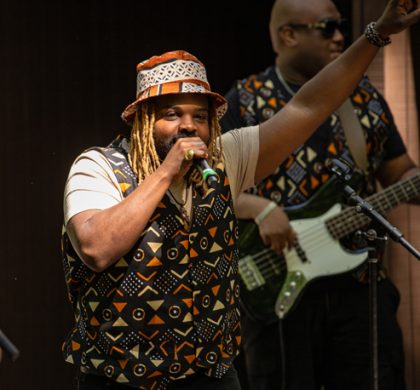Teaching Resiliency Through the Arts

Sep 25, 2020
A Q & A with Wolf Trap Master Teaching Artist Valerie Branch
Valerie Branch has been a Master Teaching Artist with Wolf Trap Institute for Early Learning Through the Arts since 2014, and is a Director of the Maryland Wolf Trap Affiliate. She specializes in contemporary dance, and works with teachers and students in early childhood classrooms, to deliver impactful, meaningful engagement through Classroom Residencies, Professional Development trainings and Family Involvement Workshops. Here, Valerie talks about the motivation behind her work, the arts’ role in fostering resiliency in a time of change, and also shares some ideas on implementing arts techniques at home.
Can you tell us about your background and how you first became interested in the arts?
I have always been attracted to dance and how the body moves and can be manipulated in and throughout spaces. There is so much beauty in what we can explore with our bodies and how we express ourselves and tell stories with even the smallest amount of movement. Dance has the potential to be anything we want it to be as long as we are committed to discovering the possibilities.
What motivated you to become a Teaching Artist, and in working with students?
I’ve always loved working and creating collaboratively with others. My responsibility as a Teaching Artist is to lay a foundation – give students the skills and key things that they need to have authority and power in their own learning experiences.
I teach and work with students because it’s not only about exposing them to the arts, but it’s about helping them to find their voice, to stand in their own truth and power, to lift them up and encourage them to strive for the greatness that they can create.

Why is it important for educators of our youngest learners to incorporate arts into their lessons? How does it further their development?
Engagement with the arts encourages deeper learning and understanding. It allows students to think differently — more creatively. It inspires them to take charge of their experiences — not only in the classroom, but in society.
The arts also encourages higher order thinking skills because it requires us to do many things at once. In dance, students use math, literacy, social/emotional development and science and engineering skills all at once: students use math as they use counts and find a steady beat; as they problem solve, they are using science and engineering methodology; and as they make connections to their personal lives they are actually stimulating language fluency.
What are some easy things that teachers and parents can do to incorporate arts into their lesson plans – both in the classroom and virtually?
Parents can encourage children to find comfort in learning from home by providing challenging and brain-stimulating activities. Dance with your children – this doesn’t have to be integration – it could just be “let’s start the day with a dance party.”
Teachers can encourage students to find something in their home that inspires an artistic response. For example, if you are talking about seasons, you can ask your students to find something in their homes that represents that season. ASK: ‘Why did you choose that item?’ ‘How does that season make you feel?’ ‘How would you describe that season?’ From students’ responses you can create gestures or frozen poses to enhance and increase understanding and connections.
Be part of the experience – inspire students to find their own creativity and take leadership over their learning by first engaging in the activity with them. This encourages the students that are shy or unsure and helps balance the students so they are “ready to soar.”
Right now, there is a lot of change and uncertainty happening in our world. How can the arts helps children deal with these issues?
The arts can be a form of release, but it is also about creative expression. Children thrive when they are able to expand and grow in holistic ways. This includes us, as adults, providing them the opportunities to engage in teaching and learning experiences that encourage higher order thinking skills. The arts have the ability to cultivate critical thinking skills as well as give children a well-rounded view of the world around them. Through the arts, children are exposed to different cultures and learn to appreciate and respect differences, while creating their own understanding and responses of what they are attracted to and not attracted to. They become critics and observers, gaining a higher ability to be aware of what is happening around them, to them, through them and for them. The arts can be used as a tool to aid children in finding different ways to channel all of their energy and their thoughts.
Recommended Posts

“Hip Hop Harmony,” A Lesson in Adapting Musical Experiences for Young Children
Jun 11, 2024 - Education

Using Music to Boost Engagement
Jun 11, 2024 - Education

